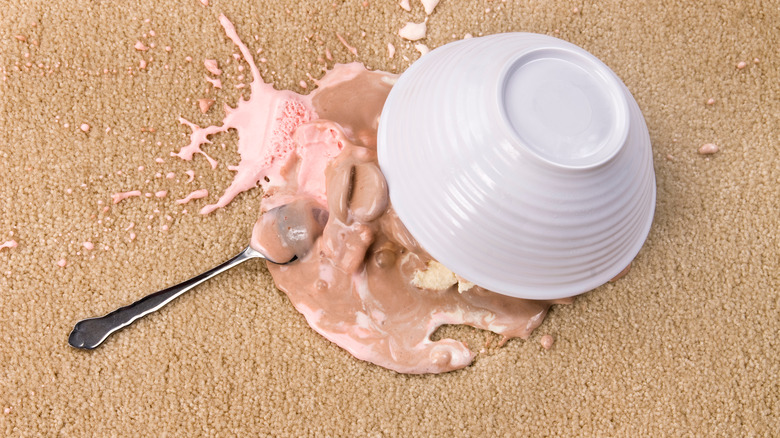The Hidden Downsides Of Putting A Rug In Your Kitchen
Adding a rug to your kitchen floor has numerous benefits. For instance, it can provide insulation against cold tile, wood, or stone kitchen flooring, protecting your feet. It also adds a splash of color and an extra layer of cushioning that keeps your fragile china from breaking when you accidentally drop them. Moreover, a soft rug in the cooking area absorbs noise and brings relief to your back, especially if you stand for long durations while cooking delicious items. However, the pros don't cancel out the hidden downsides of putting a rug in your kitchen.
Rugs get dirty easily since they're a victim of spillage and experience heavy foot traffic on a daily basis. Add grease and unpleasant odor to the mix, and your otherwise clean kitchen will look and smell anything but. While the bare kitchen floor will get dirty, too, usually it'll be easier to clean than the carpets in your cooking space.
Reasons you shouldn't lay a rug in your kitchen
Carpets in the kitchen can be difficult to maintain and keep clean. Since they're always underfoot, are subject to spills, and provide a cozy space for your pets to roam about, they accrue food crumbs, dirt, dust, and pet hair over time; things that lead to bacteria and grime buildup. Some runners, made out of wool in particular, look dirty faster, which can cause other problems as well. An unsanitary kitchen can trigger your allergies and lead to other respiratory issues. Dirty rugs will also provide a breeding ground for insects. Thus, you'll have to constantly monitor the carpet and determine if it's clean enough.
Further, you need to take care of spills immediately if you don't want them to stain your carpet or get absorbed in its fibers, leaving your kitchen smelling for days. For instance, if you accidentally spill milk onto the carpet, you'll have to get it out while it's wet to minimize the damage and your workload. Moreover, runners can be slippery if not adequately secured to the floor and are prone to wear and tear. Additionally, if your rug remains wet for long periods, it can begin dry rotting and might even attract mold.

